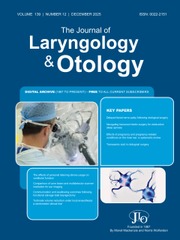Article contents
Tonsil tie simulator
Published online by Cambridge University Press: 20 August 2013
Abstract
The surgical trainee has to acquire surgical skills in an era of reduced training hours and greater demands for efficient use of operating theatre time. Many surgical specialties are utilising model and simulation-based training to provide safe, low-pressure training opportunities for today's trainee.
This paper describes a simple, relatively inexpensive tonsillectomy model that enables the practice of tonsil removal and ligation of bleeding vessels. The model is beneficial for the patient, trainee and trainer.
The pseudo mouth and active bleeding components of this model provide the trainee with a relatively inexpensive, realistic model with which to gain confidence and competence in the skill of ligating tonsillar blood vessels with a tonsil tie.
- Type
- Short Communications
- Information
- Copyright
- Copyright © JLO (1984) Limited 2013
References
- 7
- Cited by


